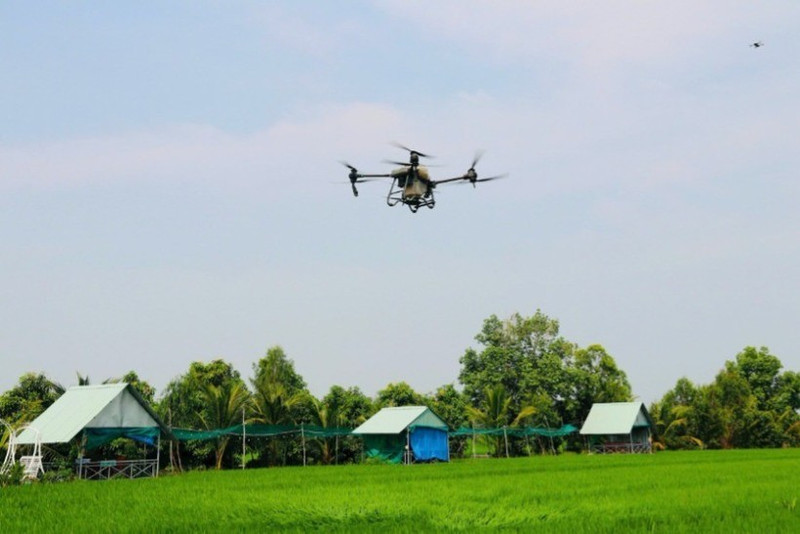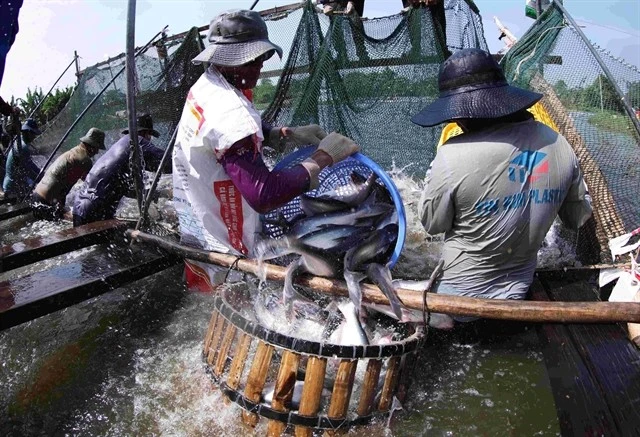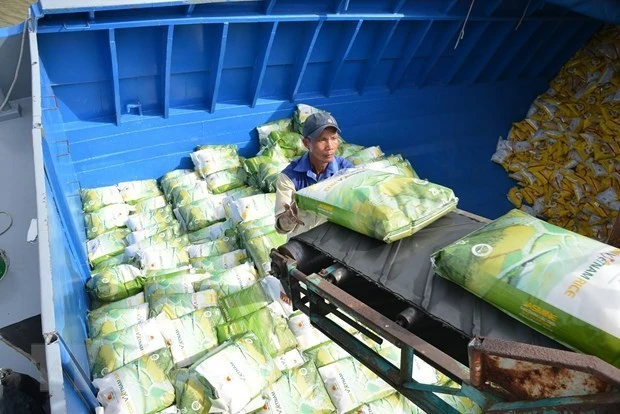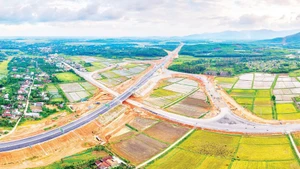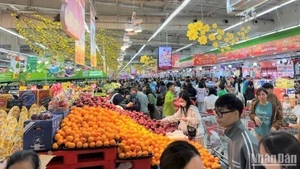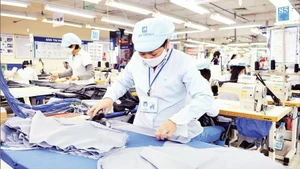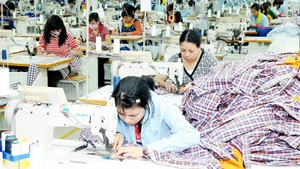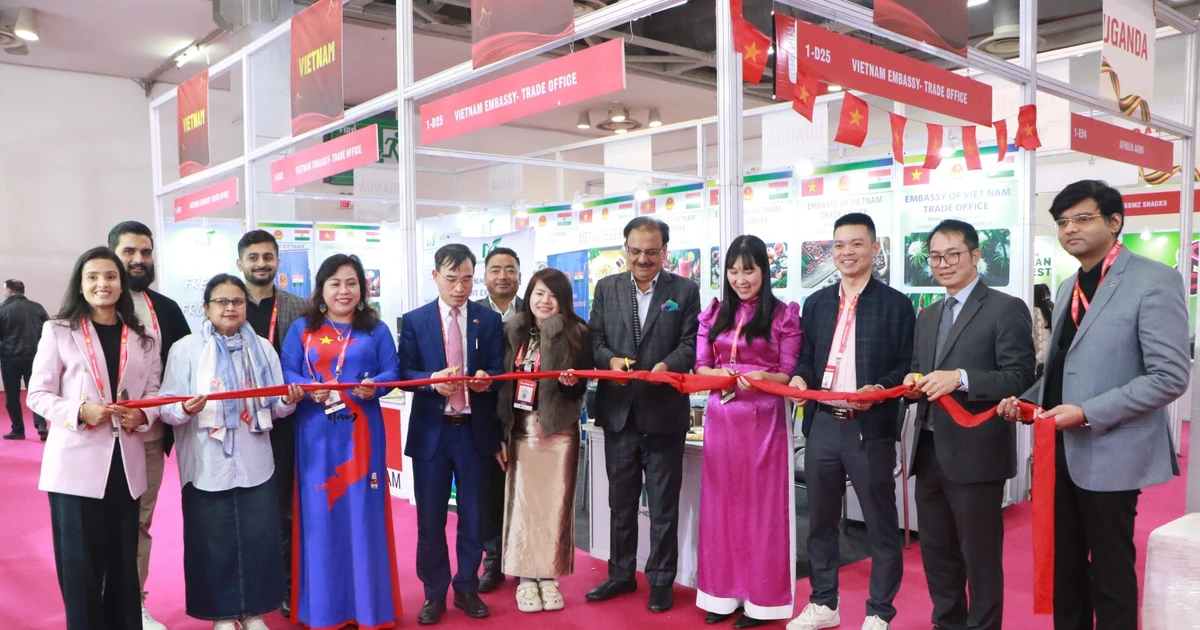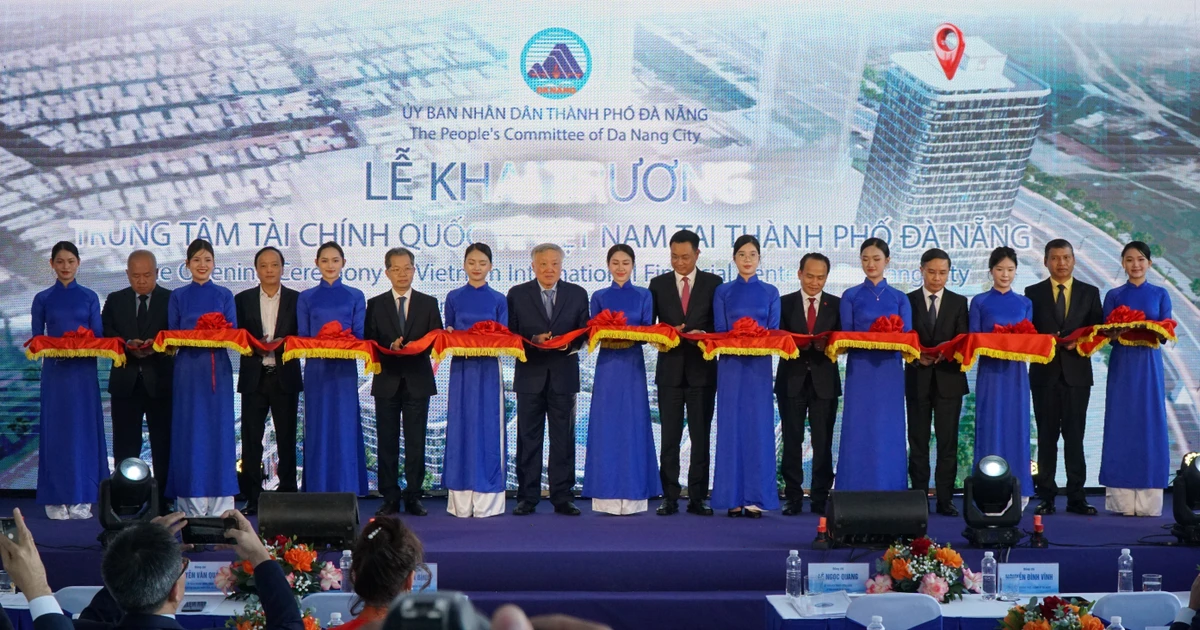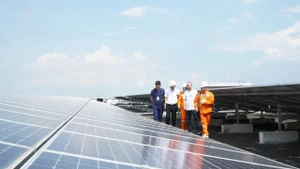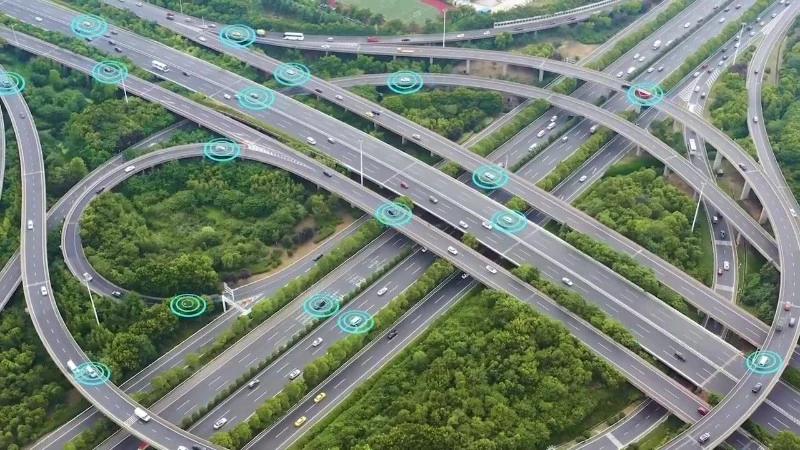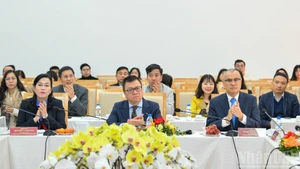Against this backdrop, identifying new drivers for growth has become an urgent priority.
Science and technology have now become an indispensable “companion” in the modern agricultural value chain, spanning production, harvesting, and commodity trading. Alongside this, digital transformation is dramatically reshaping the entire agricultural landscape through technologies such as the Internet of Things (IoT), Artificial Intelligence (AI), Blockchain, Big Data, and High-Performance Computing (HPC), opening vast potential for growth.
Data from the General Statistics Office under the Ministry of Finance indicates that Viet Nam’s gross domestic product (GDP) in the first quarter of 2025 is estimated to have grown by 6.93% compared to the same period in 2024. Of this, the agriculture, forestry, and fisheries sector grew by 3.74%, contributing 6.09% to the overall increase in added value across the economy, a relatively high growth rate for the agricultural sector.
Science and technology as a launchpad
From its core business in sugar production, Thanh Thanh Cong Joint Stock Company (TTC AgriS) has expanded into high-value agricultural products such as culinary spices and bio-based products. The company now exports nearly 200 products to 69 countries. Moreover, TTC AgriS’s agricultural solutions have fostered sustainable soil health, improved crop yields, and enhanced production efficiency for farmers. The company currently provides stable employment for over 40,000 direct and indirect workers across its value chain.
Thai Van Chuyen, General Director of TTC AgriS, shared that the company has developed an integrated value chain model covering raw material areas, production, and trade, all built on technological platforms aimed at developing a circular agriculture system and reducing emissions, with a goal of achieving net-zero emissions by 2035.
Since 2018, AgriS has gradually operated its Agri App system to manage raw material areas and has applied blockchain technology for product traceability. As a result, productivity in raw material areas has increased by 15–30% through process standardisation and digitisation, while over 60% of logistics and trading operations have been digitised.
At the same time, TTC AgriS is deploying a smart agricultural economy model based on an integrated AgTech-FoodTech-FinTech platform, focusing on three main pillars: smart nutrition, smart traceability, and smart connectivity. This has enabled the creation of agricultural zones that fully comply with end-to-end traceability standards, making products eligible for markets with high demands for sustainable development (ESG) and data transparency, such as the European Union (EU) and Japan.
Similarly serving as a launchpad for value creation, scientific and technological applications are key to Dabaco Viet Nam Group’s remarkable progress in the livestock sector. Nguyen Van Tue, Deputy General Director of Dabaco Group, noted that the group leads the way in applying biotechnology, digital technology, and innovation across all stages of production. Dabaco has invested comprehensively in modern equipment and intelligent management software, delivering significant advances in productivity and quality. The group also uses AI to analyse livestock data, forecast potential disease outbreaks, plan slaughter schedules, and manage inventory balances, helping optimise production and mitigate risks.
An electronic traceability system implemented across all Dabaco farms records every stage of the farming process, ensuring complete transparency and bolstering customer trust, thus creating a significant competitive advantage for the enterprise. Thanks to these innovations, in 2024, Dabaco became a billion-dollar enterprise, employing over 10,000 staff.
Breakthrough growth across sector
According to Le Phu Ha, Director of the Digital Transformation Department under the Ministry of Agriculture and Environment, in recent times, digitalisation and the application of information technology and digital technologies have become increasingly evident across all branches of agriculture, forestry, and fisheries. Many enterprises, cooperatives, and individual producers have implemented systems such as automated irrigation, drip irrigation, and automatic temperature regulation in greenhouses and net houses, helping to save labour costs and water resources while increasing crop productivity.
In forestry, DND barcode technology has been employed in seed management; automation and robotics have been integrated into equipment and large-scale wood processing factories; GIS technology and satellite imagery have been utilised to develop software for early forest fire detection and warnings from space. Meanwhile, IoT is being applied in aquaculture to automatically measure, monitor, and control water quality around the clock. These innovations have generated significant value for the agricultural sector, which grew by 3.3% in 2024.
Thus, technology and digital transformation are not only empowering large enterprises but have also triggered remarkable changes in every corner of the agricultural sector. They have propelled production from outdated practices to impressive leaps forward, delivering achievements reflected in the latest figures for 2024.
For example, rice production reached 43.52 million tonnes, with exports of 9.03 million tonnes earning 5.75 billion USD. Cashew nut exports stood at 723,800 tonnes, valued at 4.38 billion USD, maintaining Viet Nam’s position as the world’s largest exporter of cashew kernels. Coffee harvests totalled 2.01 million tonnes, with 1.34 million tonnes exported, generating 5.48 billion USD, reaffirming Viet Nam’s status as the world’s leading producer and exporter of Robusta coffee. Fruit and vegetable exports hit a record 7.12 billion USD, with production of key fruit crops rising sharply.
Regarding rice, a traditional and strategic commodity, Dr Tran Ngoc Thach, Director of the Mekong Delta Rice Research Institute, noted that fifty years ago, the Mekong Delta primarily grew local seasonal rice varieties with low yields, producing only about five million tonnes per year. Today, production has soared to 25 million tonnes annually. The Institute, along with various agencies and enterprises engaged in rice breeding, takes great pride in the fact that most rice varieties in the region are now locally developed.
“Currently, we have a fairly strong portfolio of rice varieties. In our ongoing breeding efforts, we continue to select popular varieties and improve their resistance to pests and diseases through hybridisation, while maintaining grain quality and the core characteristics of those varieties. Simultaneously, we are applying new techniques and technologies to develop different types of rice tailored to specific market segments, with the aim of ensuring that whatever type of rice the market demands, we have the suitable variety,” Dr Tran Ngoc Thach emphasised.
